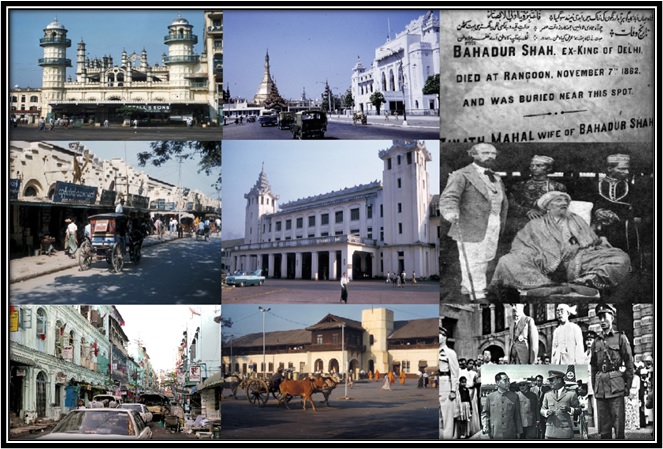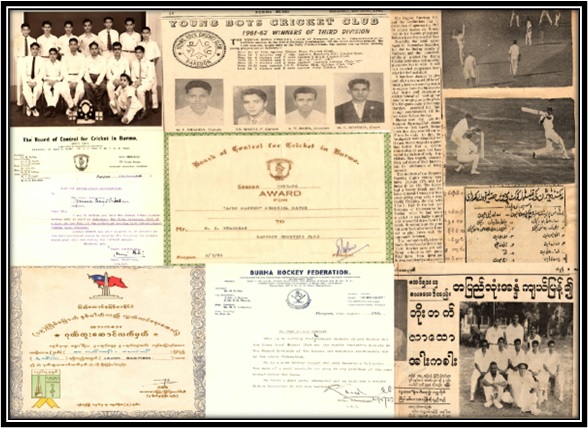

Mahmood Bhaimia: Reminiscing Rangoon of 1960s
By Dr Ahmed S. Khan
Mahmood Bhaimia, lives in Naperville, Illinois. He grew up in Rangoon, Burma. In the following interview, he reminisces about growing up in Rangoon of the 1960s.
Q: What do you remember about growing up in Rangoon?
A: I vividly remember the good old days growing up in Rangoon (Yangon), Burma (Myanmar) seven decades ago. I went to school, played cricket with friends, read Urdu newspapers, and lived with my family in a peaceful neighborhood near the tomb of Bahadur Shah Zafar (1775-1862).
Q: What do you remember about your father and family?
A: My father, Ismail, owned a hardware store located on the ground floor, with our family quarters on the first floor. He imported hardware products from Japan. Muslim businesses were owned by the Brohi and Aga Khani communities. My grandfather lived to be 100 years old. I have seven siblings; currently, two brothers and two sisters are alive.
Q: Where in Rangoon were your family premises located?
A: Our family premises were located very close to the tomb of Bahadur Shah Zafar, the last Mughal Emperor exiled to Rangoon by the colonial British. In the early 1960s, the disputed burial place was quite ordinary, but later, during the 1980s, a proper tomb was built. Many leaders, such as Marshal Ayub Khan, Zulfiqar Ali Bhutto, General Zia ul Haq, Shastari, Nehru, Josip Tito, and Gamal Abdel Nasser, were key visitors to the tomb.
Q: What schools did you attend in Rangoon?
A: I attended Randaria High School and Madrasah Noor ul Islam. I passed my matriculation exam during the 1964-65 academic year. I remember people from the UN visited Burma during those days.
Q: Where did you go to pray in Rangoon?
A: I used to go to Masjid Farooq in Rangoon; Surti Masjid was the largest mosque in thecity. I remember the special manner in which Ramadan was celebrated, with a group of people coming before dawn to wake everyone up so they could eat sahur and start their fast.
Q: What sport did you play?
A: Cricket was very popular among boys in Rangoon. There were many teams, and I was the captain of the Young Boys Cricket Team. When the Pakistan team visited Burma in the 1960s, I watched many famous cricketers in action. I remember watching Antao D'Souza play, and I vividly recall seeing one of my friends, E. Y. Bawa, clean-bowling the little master Hanif Mohammad in a match.

Q: What do you remember about the military rule in Burma?
A: The military rule continues in Burma. The present military junta is pushing Muslims out of the Rakhine province, which is rich in natural resources. Thousands of Muslims have escaped to Bangladesh to save their lives. Looking back, on March 2, 1962, General U Ne Win led a military coup to overthrow the democratically elected government of Prime Minister U Nu, taking control of power and initiating military dominance in Burmese politics. He nationalized all businesses, leading to tough economic conditions for all business families, including ours. In 1967, I left Rangoon for East Pakistan, where I lived until 1971. After the fall of Dhaka, I arrived in Karachi.
Q: What English and Urdu newspapers were published in Rangoon during the 1960s?
A: During the 1960s, a number of English and Urdu newspapers were published in Rangoon. I recall reading The Rangoon Times, Guardian, Nation, and Burma Echo in English, and Perwaz, Dur-e-Jadeed, Nigar, and Khatam-e-Nabuwwat in Urdu. The English Rangoon Gazette also catered to the Urdu-speaking population. Perwaz, an independent paper published by Ismail Ahmed Badia, had six pages and was published until 1967-68. It carried local, national, and international news. Daur-e-Jadeed was published by Ibrahim Ahmed Muzahan, and Khatam-e-Nabuwwat was published by Maulana Abdur Rahman Bawah Sahib. Other newspapers read by the Muslim community included Weekly Nigar, Shama Magazine, Filmfare, Jang, Akhbar-e-Jahan, and Jasoosi Dunya. Among children's magazines, the popular ones were Khilona, Naunehal, and Bachoon Ki Dunya.


